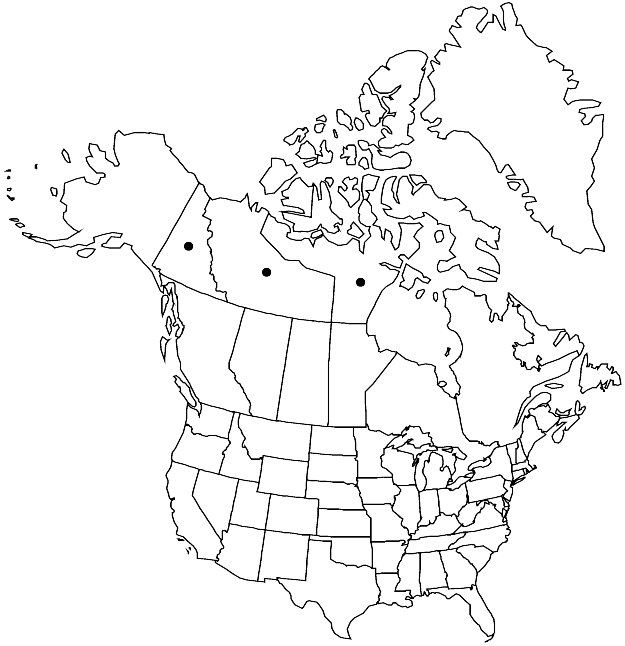Parrya arctica
Chlor. Melvill., 11, plate B. 1823.
Plants cespitose, caudex simple or branched; eglandular. Stems (0.3–)0.5–1.7(–2.5) dm. Leaves: petiole (0.5–)1–3(–4) cm, to 4 mm wide at base; blade linear-oblanceolate to narrowly oblanceolate, (0.7–)1.2–4(–5.2) cm × 2–5(–7) mm, base attenuate, margins entire or, rarely, obscurely dentate, apex acute or obtuse. Racemes 3–12-flowered. Fruiting pedicels (proximalmost) 6–20(–30) mm. Flowers: sepals broadly oblong, (3–)4–5 × 1.5–2 mm; petals white to lavender or purple, (8–)10–13 × 3–5 mm, claw 3.5–4.5 mm, apex rounded to shallowly emarginate; median filaments 3.5–5 mm; anthers 0.8–1.5 mm. Fruits narrowly oblong, 1–2.5(–3.5) cm × 3–5 mm; valves eglandular; ovules 14–20 per ovary; style 0.2–0.5(–0.7) mm. Seeds 3.5–4.5 × 3–3.5 mm; wing 0.7–1 mm wide. 2n = 14.
Phenology: Flowering late Jun-early Aug.
Habitat: Rock and cliff crevices, arctic tundra, rocky grounds, gravelly slopes, wet meadows, mounds in deltas, stream banks, sandy grassy areas between rocks, dry calcareous gravel
Elevation: 0-100 m
Distribution

N.W.T., Nunavut, Yukon.
Discussion
Parrya arctica is distributed in the Canadian arctic and subarctic islands and rarely has been collected inland, such as from the Great Bear Lake area (Northwest Territories). The major center of distribution appears to fall between 93–125°W and 67–76°N.
Selected References
None.